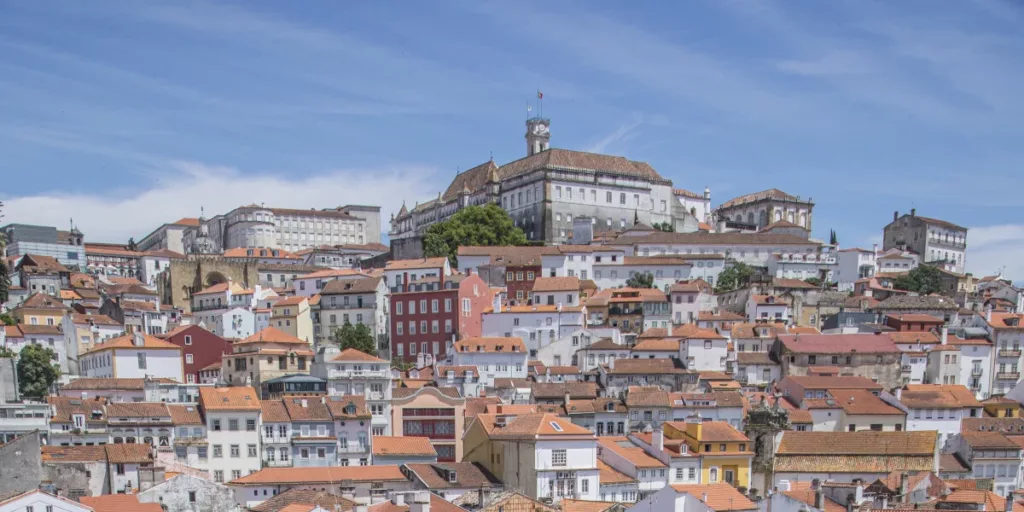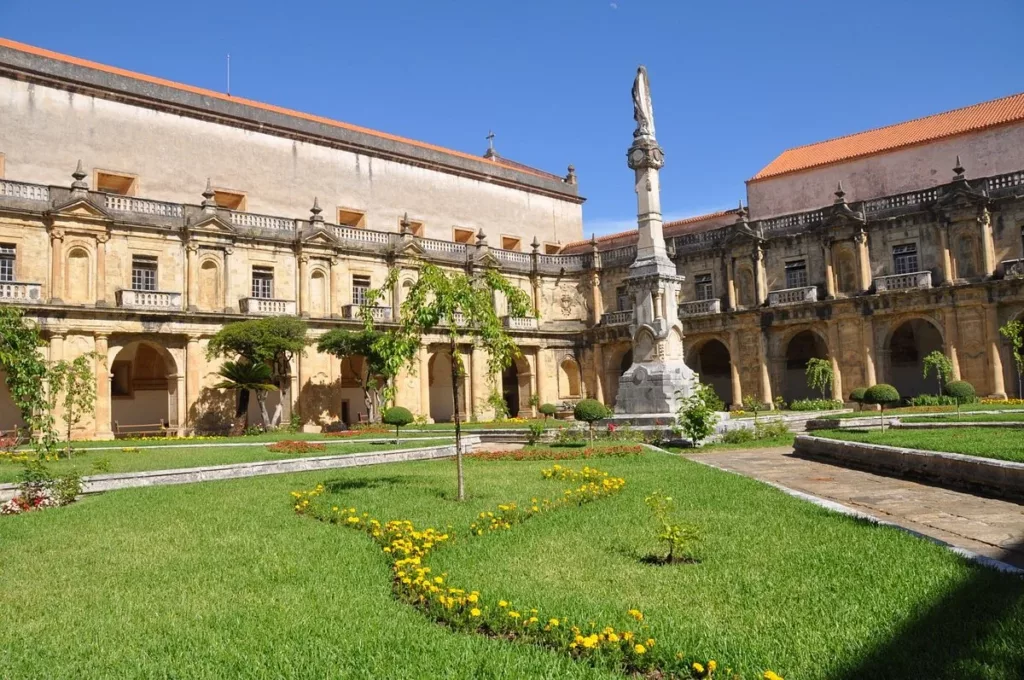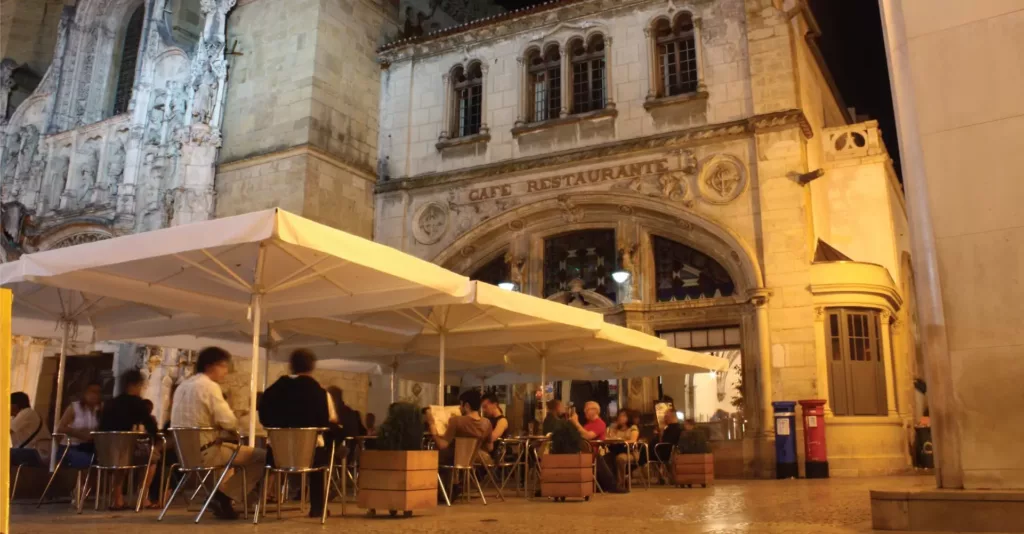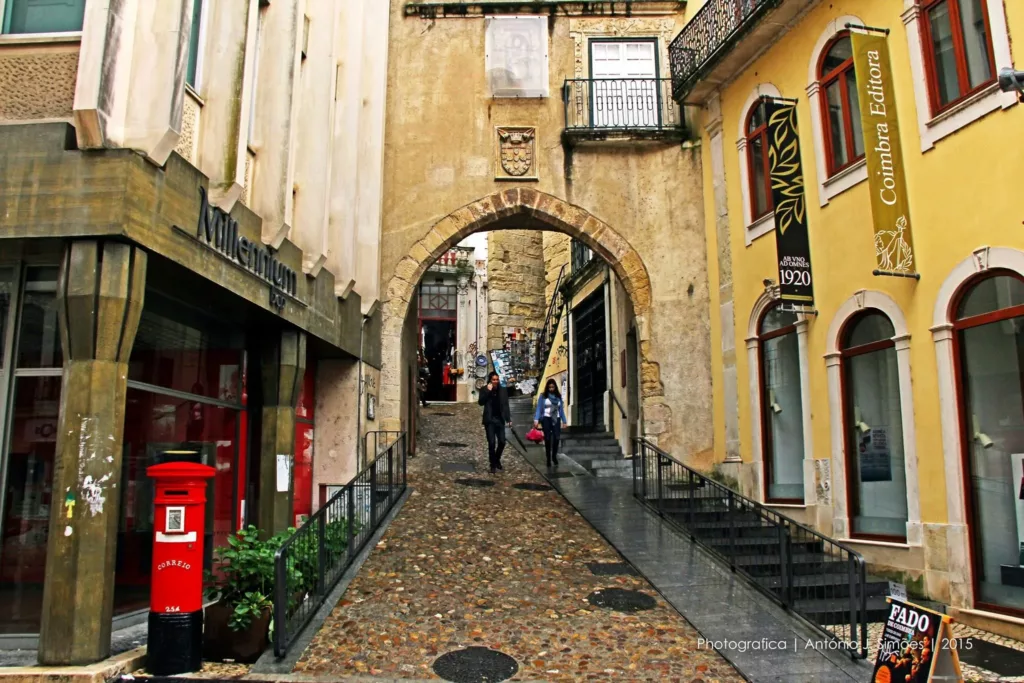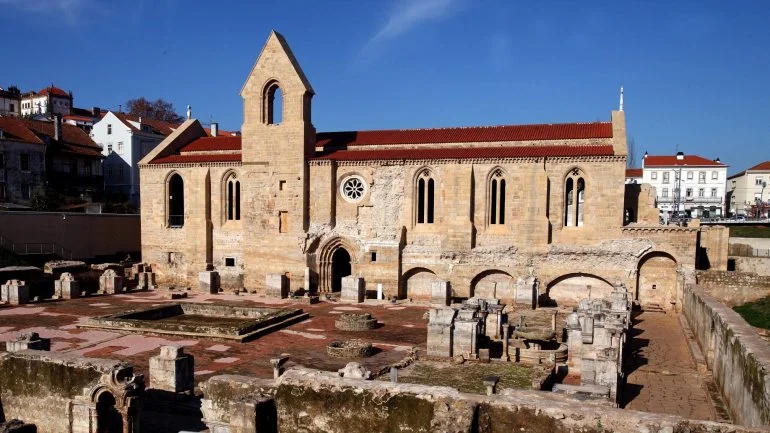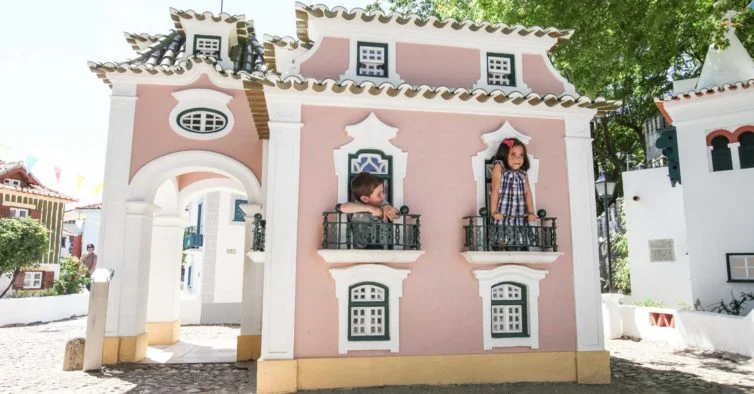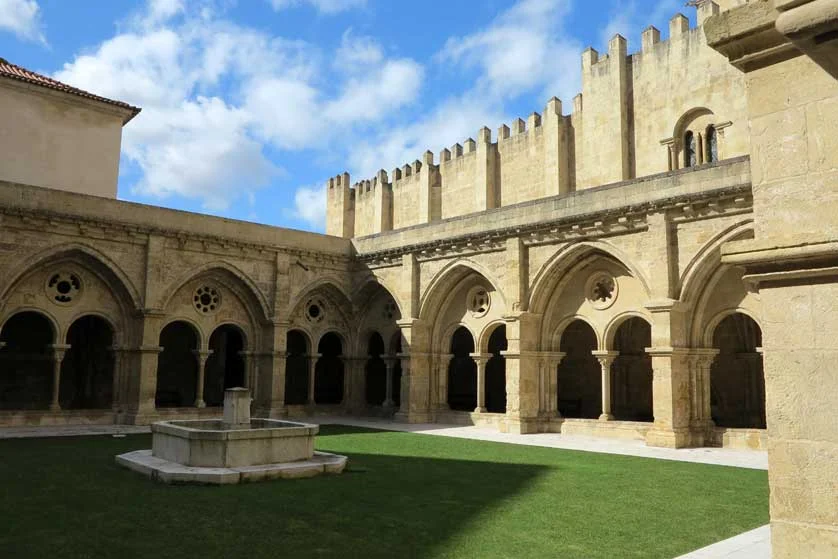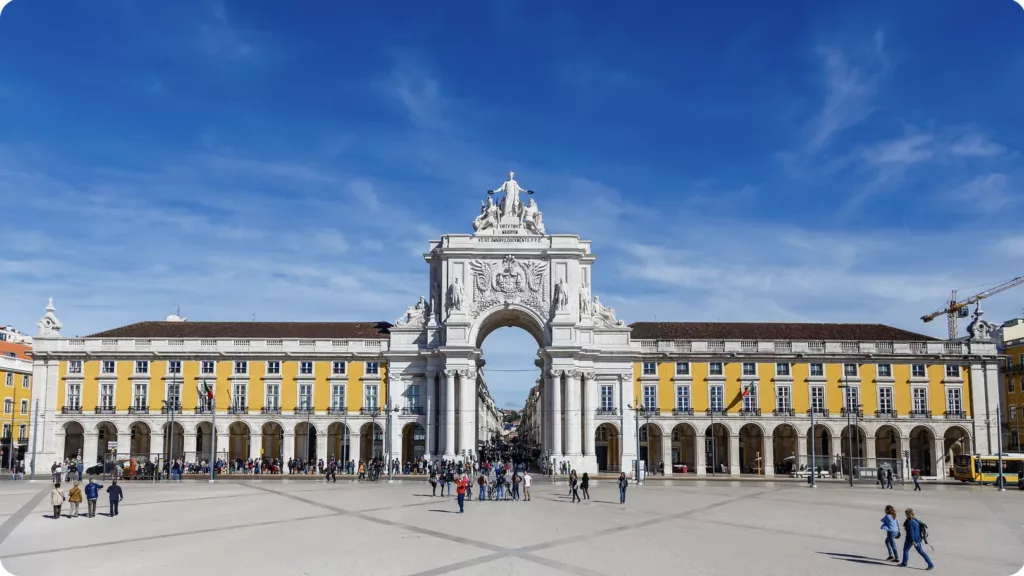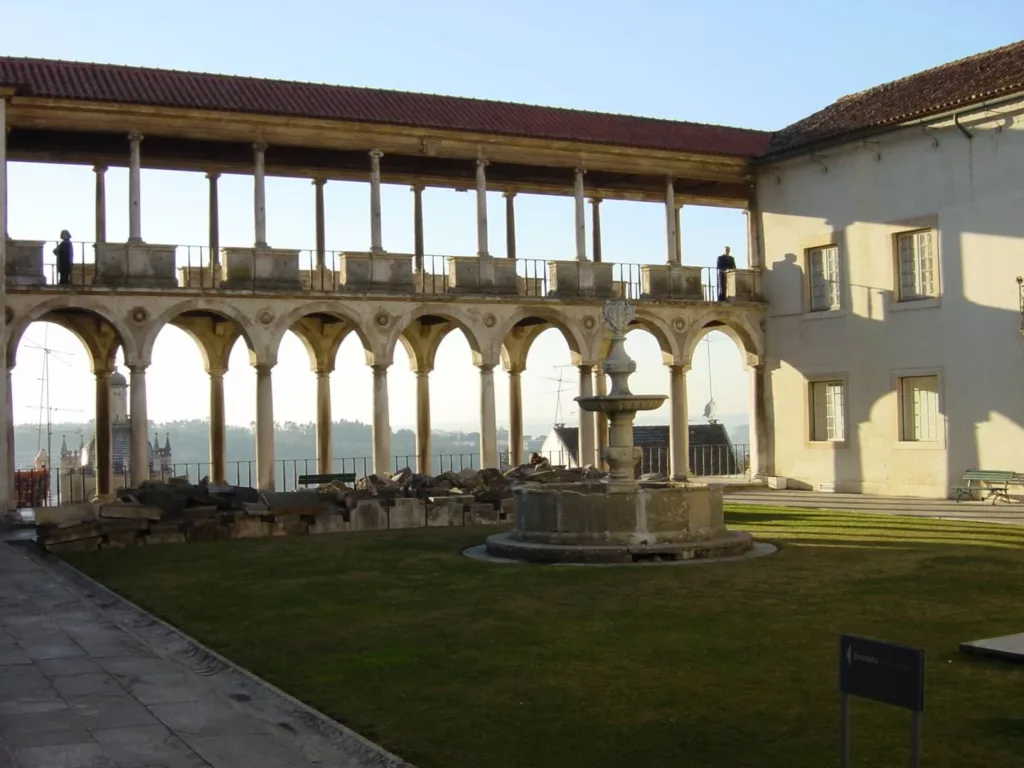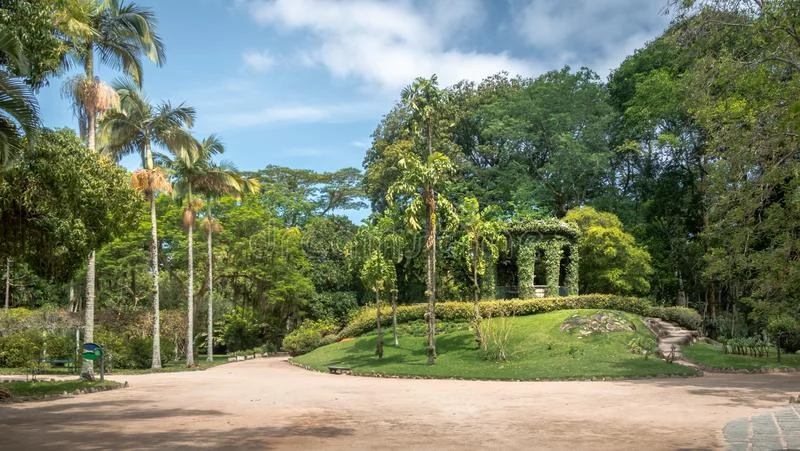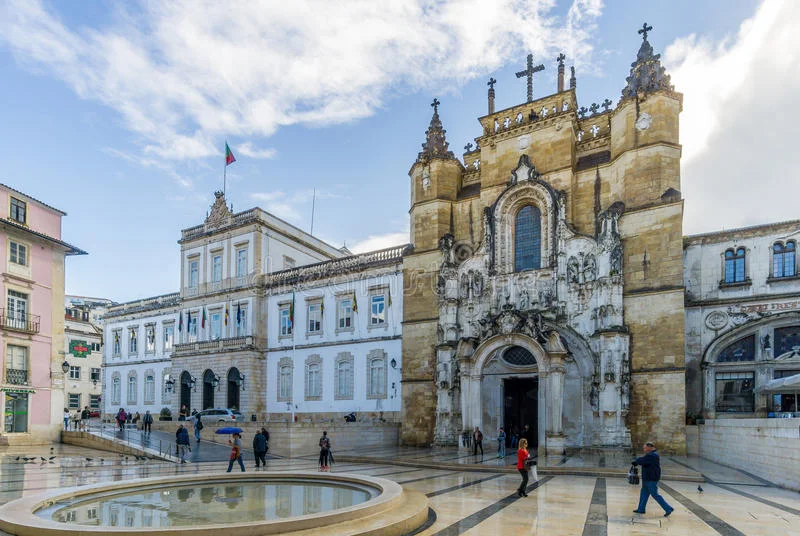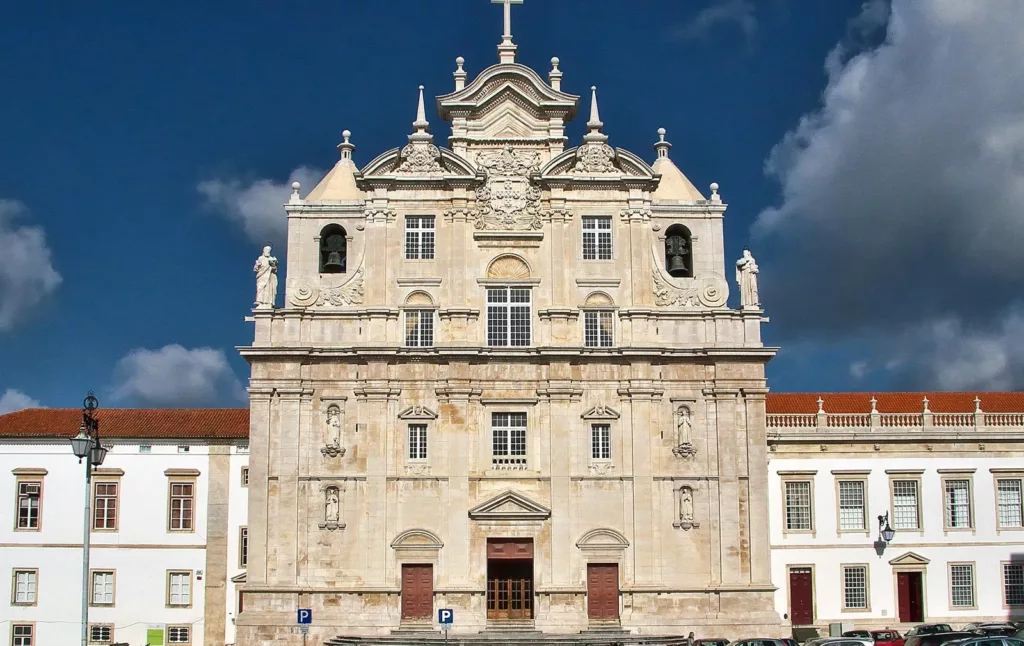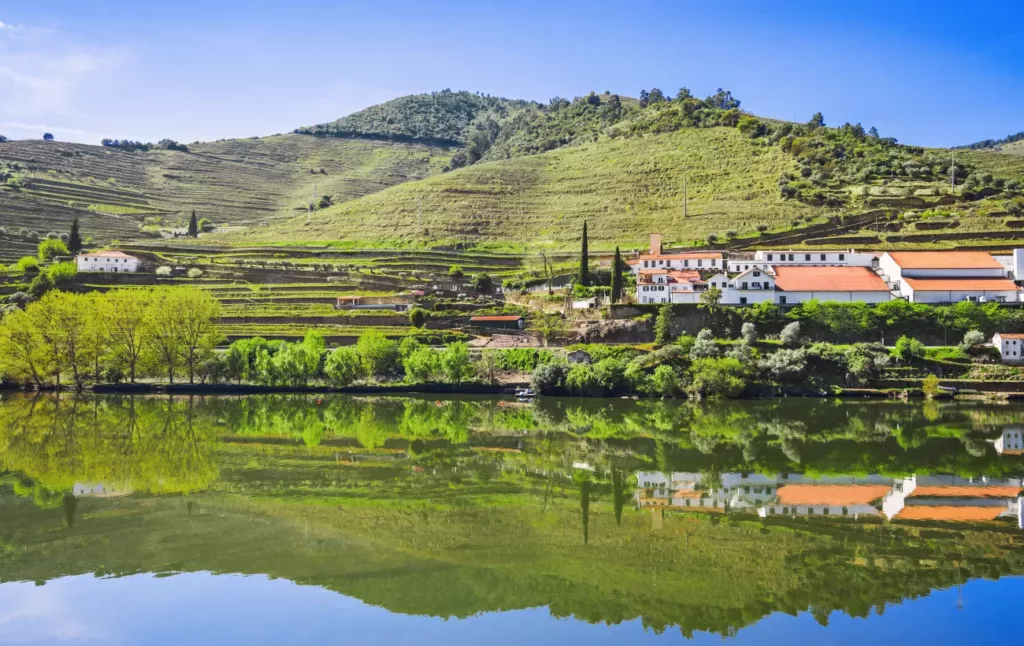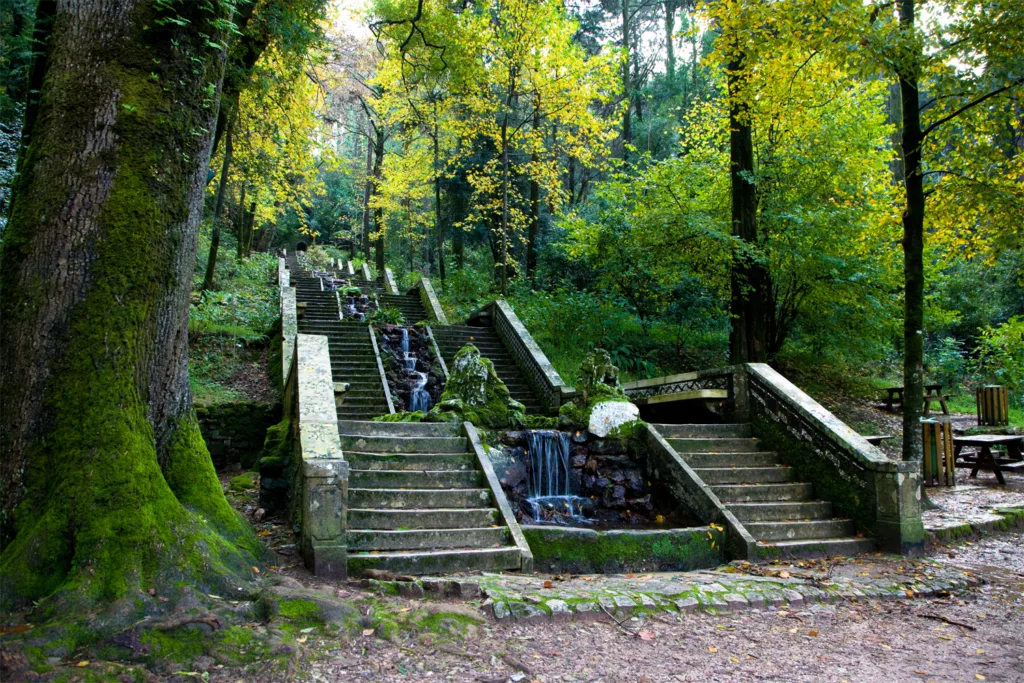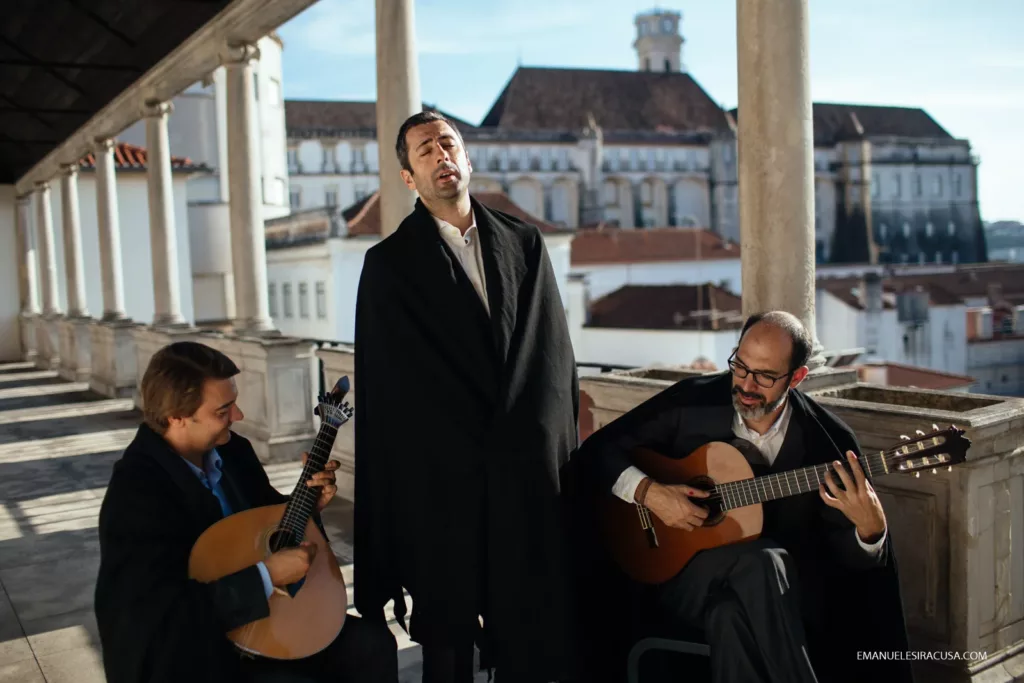As you explore Portugal, make sure not to miss the charming city of Coimbra, known for its rich history, vibrant culture, and stunning architecture. From the impressive University of Coimbra to the picturesque streets of the old town, this city offers a wealth of attractions for visitors to enjoy. In this article, we will guide you through the top attractions in Coimbra, ensuring you make the most of your time in this delightful city.
Table of Contents
Coimbra - The Gem in Central Portugal
Coimbra is a city in central Portugal and is home to the famous Coimbra University. This university was established in 1290 and is one of the oldest universities in Europe. The city center of Coimbra is beautiful and has many ancient monuments, such as its gothic cathedral, old monasteries, and historic churches.
There are also some exciting museums located throughout the city that offer visitors a glimpse into its long history. Additionally, there are plenty of lovely parks to explore and great shopping and dining options. All-in-all, visiting Coimbra will provide an enjoyable experience for anyone who wants to explore central Portugal’s cultural heritage.
See more: Top 10 Reasons To Move To Portugal
Mosteiro de Santa Clara-a-Nova
The Mosteiro de Santa Clara-a-Nova is a breathtaking monastery in Coimbra, Portugal. Built in the late 14th century, this stunning structure was initially used as a convent for Franciscan nuns. The monks later took over and added more features to the complex, creating an incredible work of art that stands even today.
Mosteiro de Santa Clara-a-Nova visitors can view the ancient stone walls and arches decorated with intricate carvings and stonework. Inside the monastery are stunning marble altars and chapels, as well as hundreds of statues depicting saints and religious figures. You can also explore the extensive library filled with rare manuscripts or take in some of the museum’s fascinating artifacts from centuries past.
Café Santa Cruz
Café Santa Cruz has an impressive history – it was initially part of the nearby Monastery of Santa Cruz, establishing itself as the “church of the poor” in 1530 so they wouldn’t disturb the aristocracy in the monastery. After the 1822’s Portuguese Revolution, it no longer had a religious purpose. Instead, it opened as a café on May 8th, 1923, gaining attention from the national press.
It soon became known as a meeting place for writers, journalists, and artists, recently awarded Coimbra’s Gold Medal for its 500 years of history and 100 years of continuous activity. It often holds cultural events such as book presentations or traditional fado music. Café Santa Cruz is truly an iconic location for all those who wish to experience coffee with such abundant heritage behind it.
Arco de Almedina
The Almedina Arch, located in the old town of Coimbra, is a remnant of the city’s original entrance. Dating back to the 9th century, it consists of two towers joined by an arched arch. The structure has undergone various renovations and refurbishments throughout its lifetime, with significant changes made during the Renaissance period.
It now serves as home to Torre’ Anto, which boasts many windows characteristic of the Renaissance style. The tower also serves as an interpretive center for the walled city. It provides temporary exhibitions and presentations on related topics for visitors to explore.
In addition to its historical significance, the Almedina Arch is renowned for its Moorish walls, which were integrated into its original design. These walls pay homage to Coimbra’s rich Islamic tradition and are still in excellent condition considering their age.
Furthermore, visitors will be able to admire the intricate carvings adorn these walls – many of which were carefully crafted centuries ago by local artisans who were highly skilled in this particular craft. Besides being aesthetically pleasing and historically significant, these carvings also hold educational value as they provide insight into how history unfolded in Coimbra.
Mosteiro de Santa Clara-a-Velha
The Mosteiro de Santa Clara-a-Velha was a beautiful, partly sunken ruin that stood as a testament to the thirteenth-century monastery. Built along the banks of the Mondego River, it had been home to Isabel, mother of King Dinis’ wives. It was believed that Isabel led the planning and construction of a new church on the property, to which she dedicated her life until she died in 1336.
Unfortunately for Santa Clara-a-Velha, floods both near and far wreaked havoc upon its foundation and caused destruction within its walls. In 1677, after multiple disasters left the convent in ruins, it was eventually dissolved. The sisters were forced to relocate to another address – Santa Clara-a-Nova – where Isabel’s body was moved in 1696.
This marked an end to a once proud structure; however, today, visitors can still view its ruins from atop the cliffs that overlook them or take part in guided tours offered by local organizations during certain seasons. Such terms highlight what remains of this historical monument, including its towers and cloisters, as well as many other artifacts, such as tombs and inscriptions, that have survived since its heyday.
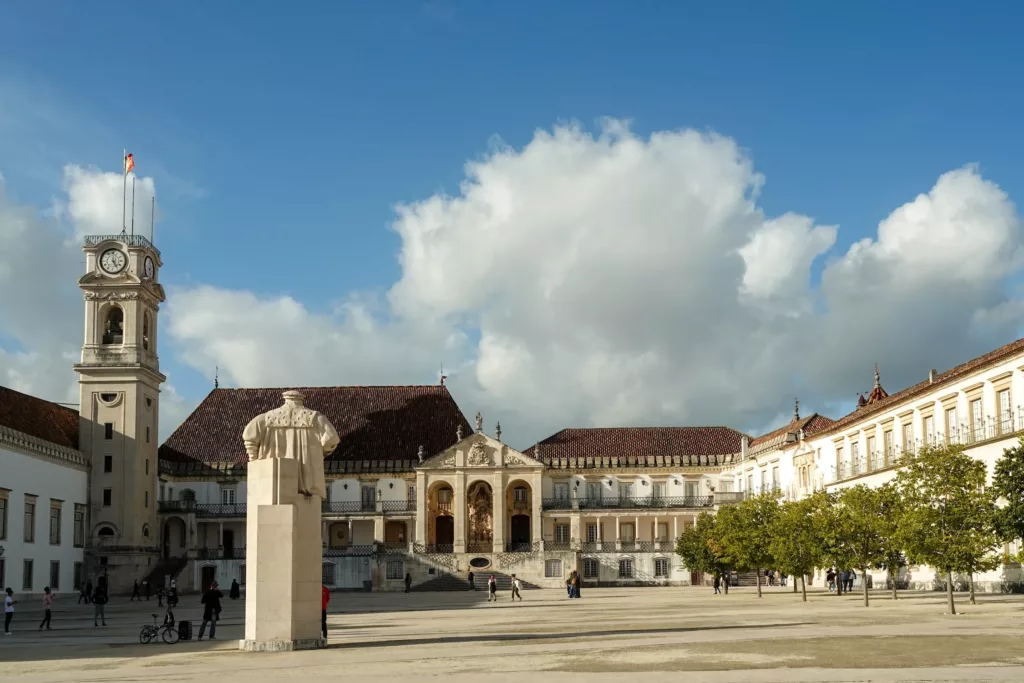
Velha University of Coimbra (Coimbra University)
Coimbra’s University, or the Velha University of Coimbra, is one of Europe’s oldest universities with a remarkable history. Established by King Dinis in Lisbon in 1290 and transferred to Coimbra in 1537, the Old University has since been partially restored in the 17th and 18th centuries in both Baroque and Neoclassical styles.
It boasts one of the city’s most picturesque tourist attractions: the Biblioteca Joanina library. Named after its benefactor Jov, this 18th-century library features rich gilded woodwork and trompe-l’oeil décor that will take visitors’ breath away.
The Old University is a sight not to be missed for any visitor or resident of Coimbra. Inside, visitors will find an array of historic artifacts ranging from ancient manuscripts to original furniture from medieval times. In addition, guided tours offer insight into its unique architecture and its many eccentricities, such as its collections of mythical creatures and miniature anatomical dolls.
Portugal dos Pequenitos
Portugal dos Pequenitos was created in 1940 and takes its name from the Portuguese term “little Portuguese kids”. It is designed for adults and children to explore miniature versions of cherished National Monuments in Portuguese architecture. The landscape is filled with replicas of Portuguese villages, castles, churches, sculptures, and more.
Visitors of the Portugal dos Pequenitos will enjoy a wide selection of activities throughout the day. Three museums on site encompassing furnishings, traditional costumes, maritime actigraphy, an entire miniature village, puppet theater, and a museum dedicated to Portugal’s history, including a replica of an old-world shipyard.
Guests can also ride in paddle boats, take the train around the miniature cityscape, explore something more traditional like the Science Park with interactive experiments, or visit the Aquarium with fish from all over Portugal. Additionally, many playgrounds are perfect for young children who want to have fun.
Sé Velha (Old Cathedral)
When visiting Coimbra, it is a must to visit the Old Cathedral. Built in 1181, the Old Cathedral is an example of Romanesque architecture. Its solid stone walls and oppressive form gives it a fortress-like presence that is just as impressive now as when it was first erected.
The interior of the old cathedral holds several decorative elements, including rich Renaissance details with its port espaciosa on its northwest side and a grand late Gothic altar that dates back to 1498. This beautiful monument has stood proudly for centuries, providing visitors with a unique opportunity to explore Portugal’s past and culture.
For those looking for a truly immersive experience, plenty of guided tours are available that offer more extensive information about the structure’s history, as well as talks about art and literature which have been inspired by this magnificent building over time.
Praça do Comércio
Coimbra’s Praça do Comércio is a bustling hub of business activity in the city’s heart. Shops, restaurants, and cafes adorn the area, with locals and tourists visiting to enjoy the unique atmosphere.
The iconic Sao Tiago Orthodox Church sits in a small district corner. It has been restored multiple times since its initial construction in the 12th century. Its exterior glows with beautifully glazed tin tiles, adding to its allure when lit in the evening. Other interesting architectural features nearby include Arco de Alemedini and Torre de Anto, which are also worth visiting for those who appreciate art and history.
Visitors should take their time exploring this area as it provides an unparalleled insight into ancient and modern life in Coimbra. Whether you’re stopping for a bite or browsing through local stores, Praça do Comérico is sure to provide an enjoyable experience for all who wander through it.
Machado de Castro Museum
The Machado de Castro National Museum is a stunning example of Portuguese history and art. Located in Coimbra, the museum is housed within the university’s cathedral, which was almost torn down in the early 20th century due to plans for a new highway. Fortunately, authorities decided to keep the cathedral due to its beauty. Instead, they moved some parts into the museum while keeping the other features on display in Largo Feira do So Miguel.
The Machado de Castro Museum consists of a large Roman building constructed over many different periods of history. Within this structure, visitors will find an impressive collection of artwork from Portugal’s many eras, from ancient statues to modern sculptures. The interior is filled with intricate architectural details, such as marble floors, stained glass windows, and high ceilings decorated with carvings and frescoes.
Visitors can roam through galleries dedicated to painting and sculpture, as well as other areas such as crypts and cloisters where historical artifacts are kept for preservation. Furthermore, a library contains books about Portugal’s cultural heritage along with documents from different time periods throughout history.
Jardim Botánico (Botanical Garden)
The Jardim Botánico, or botanical garden, is one of Portugal’s most impressive natural attractions. Located near the river in Coimbra, this 20-hectare property was first landscaped by the Marquês de Pombal in 1773. The terraced valley provides a stunning backdrop for the exotic collection of plants and trees within its walls. With roughly 1200 species represented, visitors can explore a vast array of vegetation worldwide.
One of the garden’s highlights is its old greenhouse, built in 1856. Visitors can see an impressive array of tropical plants under carefully managed conditions – perfect for those who want to experience a taste of warmer climates without leaving Portugal. There are also plenty of educational opportunities available to tourists; guided tours offer detailed information about many rare and exciting species within the garden and local history and conservation efforts. Additionally, numerous areas for picnics throughout the gardens provide a tranquil setting for visitors to take in their surroundings.
Igreja de Santa Cruz (Church and Monastery)
The Church of Santa Cruz in Coimbra is a prominent symbol of Portuguese history and culture. It was initially founded by Afonso Henriques and Sancho I, the first kings of Portugal, during the Romanesque period.
This architectural wonder is renowned for its Manuelina facade, designed by the highly-esteemed Diogo Boitacci. He was responsible for creating the distinctive chapter house with its unique stone carvings, an impressive accomplishment attributed to him.
In addition to Boitacci’s work, Santa Cruz church features sculptures from other notable 16th-century artists such as Nicolau Chanterène and Jean de Rouen. It is believed that Chanterène worked on crafting the royal tombs adorn the church doors.
These detailed works of art are a testament to his exceptional skill as a sculptor and master craftsman. Visitors can truly appreciate the beauty found within this fine building as they take time to admire all of its intricate details.
Sé Nova (New Cathedral)
The Sé Nova (New Cathedral) is a grand Jesuit church in Coimbra that dates back to 1598. It has a cluttered façade that speaks of the church’s conservative roots. This is complemented by an equally extravagant interior, with its golden altar atop the chancel at the heart of the seventeenth century as the standout feature. The font and choir stall previously belonged to Sé Velha and now adorn this grand cathedral.
Those who visit Sé Nova will be able to marvel at its extravagance, from its ornately decorated walls and ceilings to its impressive golden altar, which was crafted during the height of the seventeenth century. The floor of this historic church also features intricate patterns and detailed tiles with captivating designs that are sure to draw visitors in.
Additionally, those willing to explore further will find numerous works of art scattered around for viewing pleasure, such as paintings, sculptures, and stained glass windows depicting religious themes.
Mondego River Cruise
Mondego River is the perfect way to take in the sights of Coimbra. A gentle cruise down this ancient waterway provides a calming and relaxing experience, offering views of the city’s historic architecture, from cozy medieval homes to expansive churches and monasteries. You can even get up close and personal with local landmarks by climbing aboard one of the city’s three-wheel scooters, which can take you into areas not easily accessible by traditional vehicles.
On your Mondego River cruise tour, you can learn about Coimbra’s fascinating history dating back centuries, beginning with its Roman settlement during the 2nd century BC. The city was a critical administrative center for successive Portuguese rulers throughout the Middle Ages through colonial rule and independence in 1822.
You’ll also see some of Portugal’s most compelling examples of Renaissance architecture, including Baroque facades, which reflect Portuguese culture from many different periods. Not only will you gain an appreciation of Coimbra’s impressive past, but you’ll also discover its more contemporary attractions, such as its vibrant nightlife scene and world-class universities.
Mata Nacional do Buçaco (Buçaco National Forest)
The Buçaco National Forest lies just 25 kilometers east of Coimbra, nestled among the hills of Serra do Buçico. This stunning and mysterious landscape is a nature lover’s paradise, perfect for tourists seeking to explore the lush countryside of Portugal. With over 105 hectares of undulating terrain and atmospheric forest trails, visitors can discover hidden valleys, cascading rivers, caverns, and ancient monuments amongst its rolling hillsides.
Meandering along the park trails, you’ll find plenty of natural wonders that will capture your imagination, from crystal-clear lakes and unspoiled pockets of nature to age-old trees cloaked in a shroud of mist and postcard-perfect meadows brimming with wildflowers in springtime.
One can also find centuries-old ruins that tell stories of a bygone era, such as abandoned stone castles and ancient monasteries perched atop hilltops overlooking dramatic vistas. Whether you’re keen on hiking up challenging mountain paths or simply wish to take leisurely strolls along tranquil pathways through peaceful woods, this national park has something to offer every type of traveler.
At Buçaco National Forest, time moves at a slower pace, and all cares melt away – here, one can easily escape the hustle and bustle of everyday life while connecting with nature in complete blissful solitude.
Its endless pockets are ripe with exploration potential, offering endless opportunities to capture unforgettable memories amongst its winding trails; from peaceful picnics beneath shady trees or invigorating bike rides across scenic routes – all leading towards breathtaking views that will captivate even the most seasoned traveler. With every step taken into this wild haven comes a renewed appreciation for Mother Nature’s beauty and an opportunity to explore all its enchanting secrets firsthand!
See more: Top Portugal National Parks
Fado ao Centro
Fado is a type of Portuguese traditional music with origins that can be traced back to the 18th century. It’s often characterized as sad and reflective and performed by one or two singers accompanied by a Portuguese guitar. The lyrics are traditionally about fate, mortality, and love (both lost and found).
The Fado Centro Ensemble comprises students from the University of Coimbra studying musicology, composition, audio engineering, and many other related courses who come together to perform. One goal in mind: bringing fado to life! They regularly perform at various venues around Coimbra, including theatres, concert halls, churches, and even bars – making sure no visitor goes without experiencing.
Coimbra Travel FAQ
Is Coimbra worth visiting?
Coimbra is definitely worth visiting. It is home to one of the oldest university cities in Europe. It offers visitors a wealth of historical monuments, cultural attractions, and outdoor activities.
What is Coimbra Portugal known for?
Coimbra, Portugal, is known for its rich cultural heritage and central location. It was once the capital of Portugal during the Middle Ages and remains a critical academic center today as it is home to one of Portugal’s most famous institutes, the University of Coimbra. The city is also noted for its strong Fado music tradition and other traditional music forms such as Morna, Picarolada, and Mazurka.
How many days do you need in Coimbra?
A minimum of three days is recommended if you want to explore the city’s main attractions and better understand its history and culture. However, if you are looking for a more leisurely stay, five or six days would give you ample opportunity to experience the beauty of Coimbra at your own pace.
What does Coimbra mean in Portuguese?
Coimbra translates to “meeting place” in Portuguese. It is derived from the Latin word “convenire”, meaning “to come together”. Coimbra was once an important center of learning and has retained its historical importance as one of the oldest cities in Portugal. The University of Coimbra, established in 1290, is the country’s oldest university and one of the oldest in Europe.
Where is Coimbra located?
Coimbra is located in central Portugal, about 100 km northeast of Lisbon. It is situated on the left bank of the Mondego River and is one of the oldest cities in the country. It has over 150,000 people, making it one of Portugal’s most significant urban centers.
